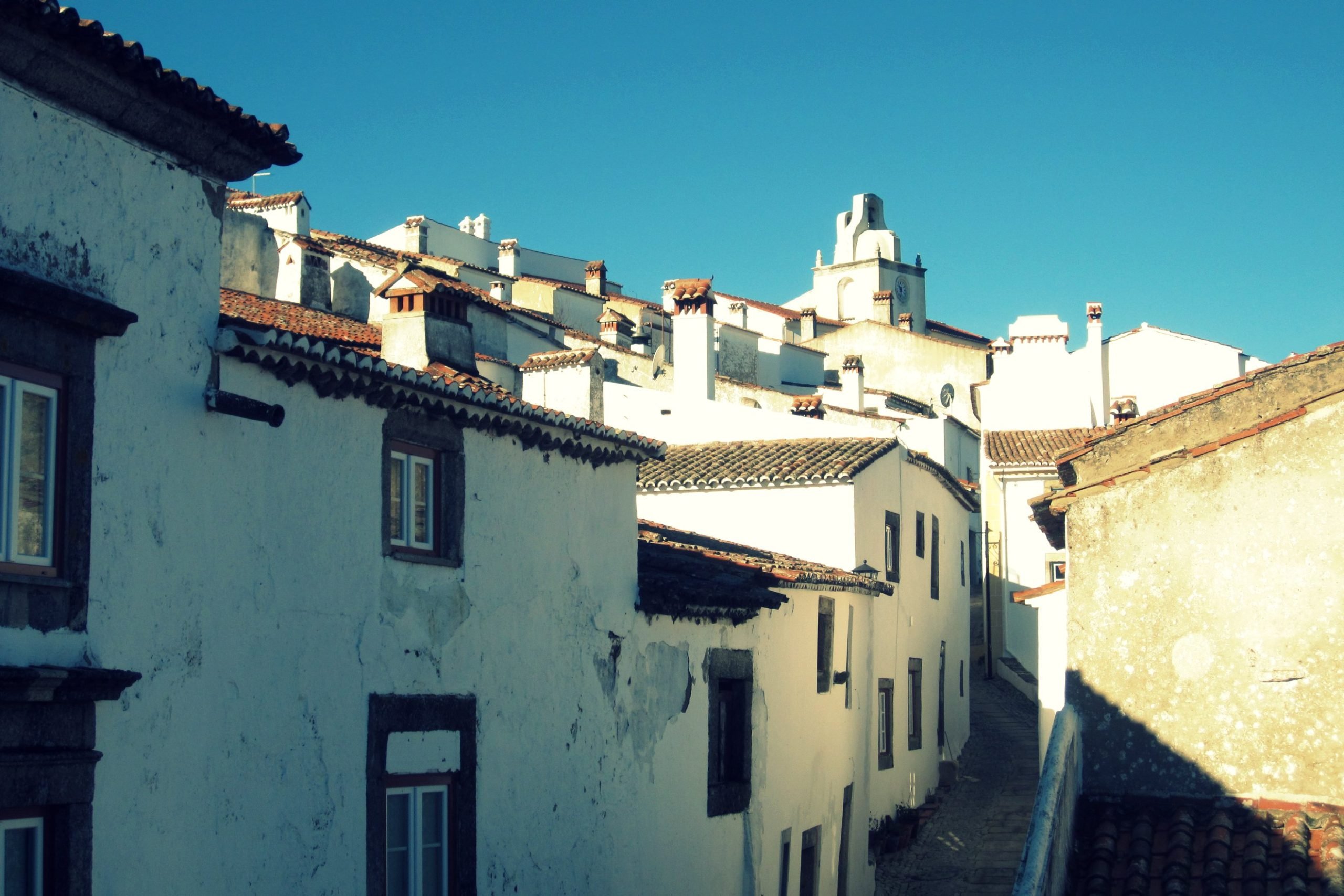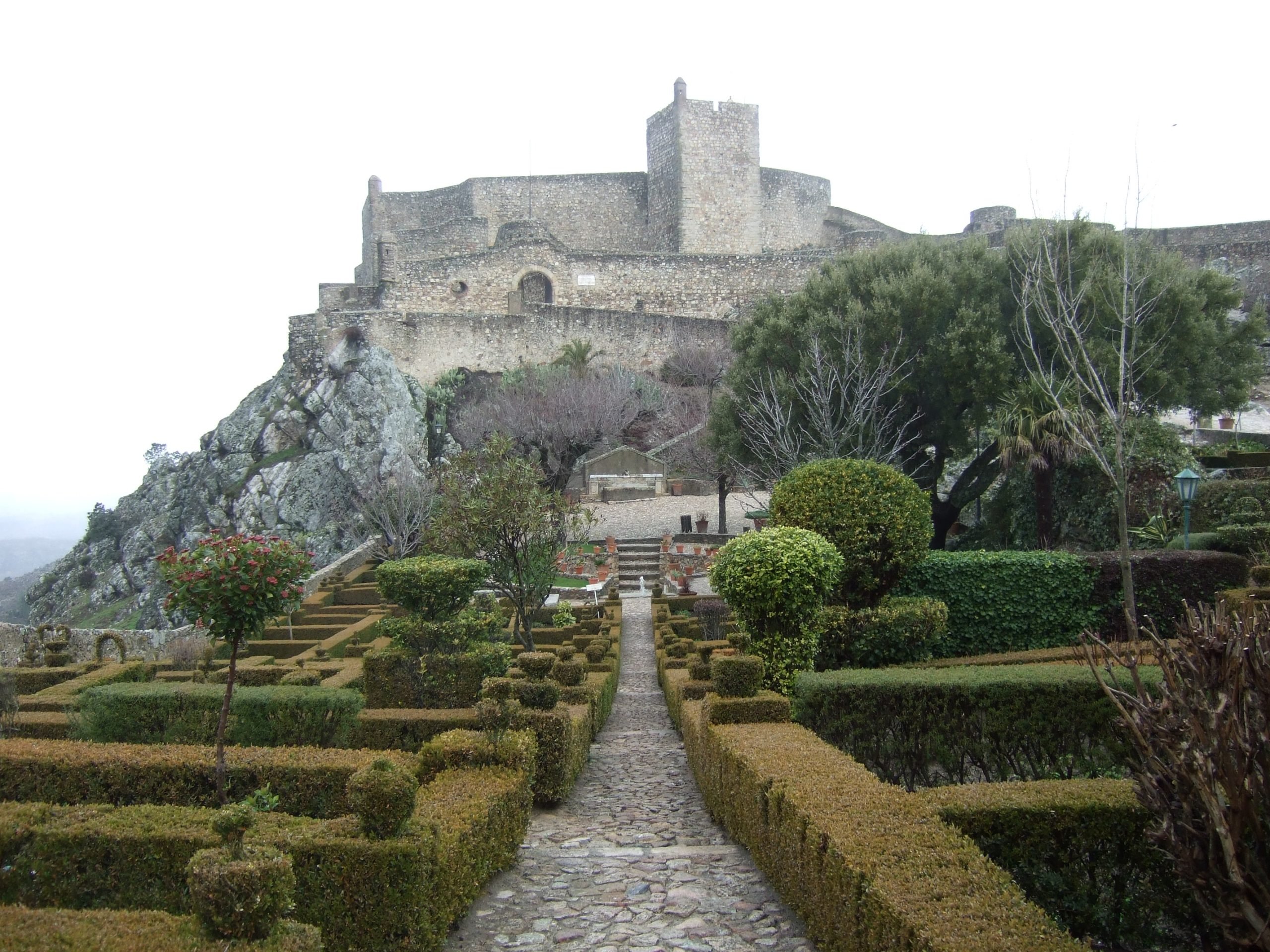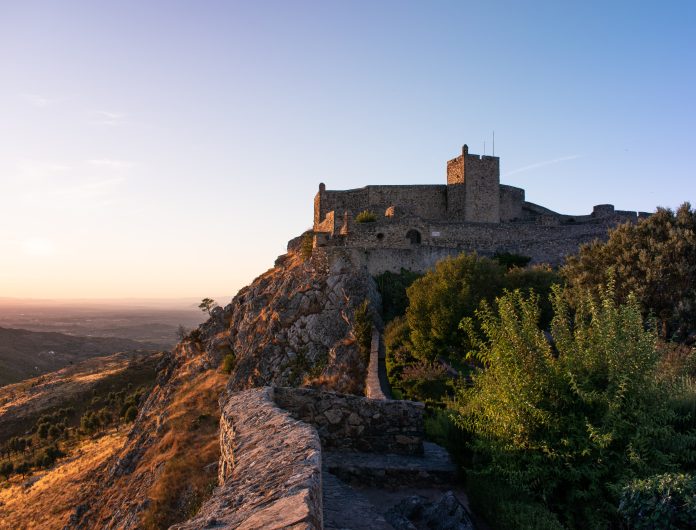“From Marvão one can see the entire land… It is understandable that from this place, high up in the keep at Marvão Castle, visitors may respectfully murmur, ‘How great is the world’.” – words signed by the famous Portuguese author José Saramago.
Located on a hilltop at the border with Spain, the Castle of Marvão greets thousands of tourists yearly, offering them a glimpse into Portugal’s history.
Although most people visit Portugal for its oceanside cities and unbelievably charming beaches, they do not regret distancing themselves from the busy coastal areas. That’s how many travelers end up at the Castle of Marvão (and other castles as well – the country is actually filled with them!) and fall in love with the place on the spot!
Let’s discover some facts about the Marvão municipality, the castle’s history, and details about visiting the area! Enjoy your trip!
A Little About Marvão
Marvão is located in the Portalegre District in the east of Portugal. It is quite a small municipality, with a total area of 154 sq km and a population of only 2,972 people, registered in 2020.
The region is a gem for anthropology enthusiasts, as it is surrounded by several carved tombs and burial chambers, suggesting that it was once home to small farming settlements. Furthermore, archaeologists discovered a necklace in the region dating from the 3rd millennium BCE, as well as decorative objects like ceramics and deity sculptures.
Without getting into too many details because we want you to have the privilege to discover them by yourself, we’ll just say that Marvão is a dream destination for anyone looking for an authentic, history-rich town to enjoy on a one-day getaway.
Marvão should also be a top pick for travelers keeping an eagle eye on aesthetic treasure – it overlooks the Tagus basin and the Serra de Estrela, making for stunning views!

History of the Castle of Marvão
It is believed that the Castle of Marvão dates back to the 9th century, having been built by Ibn Marwan, also known as al-Jillīqī, a Muwallad (Muladi – population native to the Iberian Peninsula who adopted Islam in the aftermath of the Muslim conquest). Allegedly, he built the castle between 876 and 877. In the 10th century, the settlement acquired the name Amaia de Ibn Maruan or Fortaleza de Amaia.
Between 1160 and 1166, the region was conquered from Moorish forces by Christian forces loyal to Afonso I of Portugal. Years later, Afonso III donated the settlement to the Order of Malta, which would later be awarded to D. Afonso Sanches, his son.
When King D. Dinis, the eldest son of Afonso III, rose to power, the settlement found itself trapped in a dispute between the sovereign and D. Afonso. In 1299, it was conquered by the forces of the sovereign.
Ferdinand I of Portugal, who ruled between 1367 and 1383, named Marvão a sanctuary place. Over the next century, Marvão underwent works of reinforcing the walls and expanding the settlement. The region’s castle was remodeled multiple times – first, it acquired the turrets, then the corbel, and, lastly, the reinforced bastions.
In 1641, after the castle had been named a primary line of defense, it was attacked by the Spanish forces, who left the fortress in ruins, and required serious repairs. Not long after, the army commanded by the Duke of Berwick conquered the fortification, only to surrender it a year later to the army commanded by Count of São João.
Over the next several hundred years, the Castle of Marvão continued to stand as a defense fortification, having suffered multiple attacks. Its location was probably its key strength – it could only be accessed from a narrow, very steep road.
However, it wasn’t only the attack of foreign forces that took a toll on the castle’s majesty. In 1997, the Southern Barbican (a fortified gateway) was struck by lightning and completely destroyed.
Although many details of this castle’s long-standing history spanning over several centuries were omitted in our article (we’d have to write a book to share everything!), we can definitely state that its contribution to the country of Portugal is undeniable and substantial.
Visiting the Castle of Marvão
Carrying proof of won and lost battles, the Castle of Marvão lies at an altitude of 800 meters on a rocky, steep hill, overlooking the whole region. Its extensive walls enclose the medieval town, further adding to its charm and value. The cistern in one of the castle’s courtyards is among the things that impress visitors the most. The fact that it is still functional stands as evidence of the region’s authenticity.
As you walk through the area, you’ll delight in the picturesque, out-of-this-world views that will take your breath away. You’ll probably start envisioning yourself spending all your evenings there, wondering how it would be to live in such a serene place…
As such, taking your time to visit the Castle of Marvão should definitely make it to your must-do list. However, we must warn you – the roads are quite narrow, so you should drive very carefully.
On the positive side, although the region has become quite a popular tourist destination in recent years, its location (far from the ocean and more difficult to access) doesn’t make it to the top of the list for all travelers. That’s why it is usually very quiet, without the busyness of other popular tourist spots. Therefore, you can enjoy a peaceful evening watching the sunset over Europe’s most beautiful lands.
The Castle of Marvão is open daily and the entrance fee is 1.5 EUR. In the winter, visiting is allowed from 10 am to 7 pm, while in the summer, the castle is open from 9 am to 9 pm. We strongly recommend checking the hours and entrance fee beforehand to ensure nothing has changed.

Other Landmarks to See in Marvão
Since you’re already in Marvão, take your time to check out some other landmarks in the area. Visit the Santa Maria Church and the Municipal Museum located within it. The museum is home to rich collections of sacred art and archeological pieces outlining the region’s history.
You can also visit Antiga Casa do Governador, which opens the doors to 17th-century architecture and decor. Don’t forget to add Capela do Calvario and Capela do Espirito Santo to your list as well.
During your stay, don’t hesitate to enjoy lunch or dinner in Marvão. This way, you’ll be able to try some of the region’s specialties. In addition, souvenirs are truly unique there (and at excellent prices!). So if you haven’t had time to buy anything yet, we’re sure you’ll pack your bags with lots of ceramics from Marvão!
The Best Time to Visit the Castle of Marvão
Naturally, you should schedule your visit depending on your preferences and availability. However, we recommend checking the weather forecast beforehand. Bear in mind that the castle is at a higher altitude, and you definitely don’t want strong winds on the day you get there!
During the winter, the weather in Marvão may be slightly colder than in Lisbon, for example. It may also rain frequently. Sometimes the rain showers are frequent but short, interspersed with sunshine, while other times they are more constant, making it quite unpleasant to walk around the city.
If you haven’t decided on a season yet, we recommend visiting the Castle of Marvão in the spring, preferably May, or in the autumn, preferably September. If you’re looking for a magical destination for your next Christmas, you can give Marvão a chance as well. The holiday atmosphere is truly enchanting in the region!


